Children are pure. When children observe an object, they can put it in painting or create a new world by spreading the wings of their imagination. Choi Jae Eun, a graduate of Chung-Ang University's (CAU) Department of Theater & Film Design, designs products based on the innocence and imagination of children as part of her own brand. Let's meet Choi Jae Eun, who founded the brand "a’dren" with love for children.
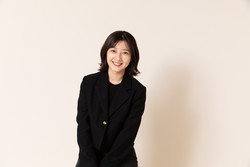
#Starting the Interview
1. Please introduce yourself for CAU students and readers of the Chung-Ang Herald.
Hello, I'm Choi Jae Eun, Alumni from the School of Performing Art & Media, Department of Theater & Film Design. While in college, I founded a brand called “a’dren”, which designs products based on children's stories, which I have been running as a co-representative until last year, and am now preparing for personal creation.
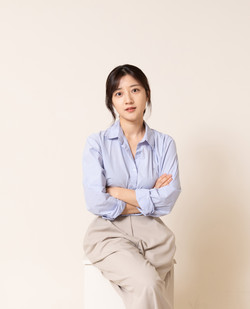
2. What prompted you to design focusing on kids stories?
The work of stage design was a very precious and enjoyable experience for me. Due to my insufficient skills and results I wanted to do something more satisfying. I took a leave of absence from school and did art class lectures at an art museum, and based on this experience, I decided to plan a design project with my friends and nursery school children, which naturally led to commercialization.
3. What was a memorable class in Department of Theater & Film Design?
“Text Analysis and Image” class was my favorite. It was to analyze a play thoroughly based on the text, and it was so interesting. From then to now, I like to create images that remind me of images through text and capture each letter in them.
4. What was your biggest turning point in your school days?
Just before I took a leave of absence, I spent a year really focusing on my school life. I was vice president of the College and participated in seasonal performances as the main designer. In the process, I learned a lot of communication methods as a leader. I think experiencing as many things as I could was very important in order to find what I like and I am good at.
5. Was there any school class or event that helped you start your own business?
When I was on my leave of absence from school, I successfully crowdfunded “a’dren” and prepared it for commercialization. I remember Professor Baek Young-joo carefully guiding not only space planning, but also the planning and operation of art classes where adults and children should collaborate, writing practical meeting minutes, and how to lead and communicate with team members. When I think about it now, I think it was the most necessary coaching to "go out into society," so I'm very grateful.
#About Business for Kids
6. You started an art education volunteer team with the goal of "Let's design together with design students and children." How did you start your own business?
Since I like children and have experience in planning and running art classes for them, I wanted to create something with them based on this. I made 2-3 rounds of art curriculum and made phone calls and sent emails to nursery schools in Seoul. It opened its first crowdfunding in the summer of 2015. The response was better than I thought, and many people requested the second funding, so I planned the second funding quickly. Because the process was enjoyable and I wanted to continue, I finished funding twice before returning to school and began the start-up support project.
7. Did you have any difficulties while studying and running a business at the same time?
I was already trained because I was often staying up all night due to so many assignments in my major. After returning to school, in my fourth year I was more passionate and encouraged because of the business that I had to continue after graduation. Of course, I gave up many other classes such as electives because I was focusing on “a’dren.” It was hard at the time, but now that I think about it, it was a time of true freedom that was the most efficient.
8. Please explain in detail the structure of “a’dren”, which operates under the motto of "Inspired by child, designed by a designer, continued by you!"
“a’dren” began from the beginning by drawing a virtuous cycle of children, designers, and consumers. Inspired by children's paintings and stories, we wanted to create a structure that would capture the paintings and stories in design, deliver them to consumers, and draw with them again with the proceeds. I think it's more meaningful because it's not just for profit, but because it's something we can enjoy with children.
9. “a’dren” is a company that makes products inspired by children's stories. How do you plan your products?
Working with children, we don't intend to connect their thoughts with product design. If we choose the direction of a specific product and participate in children's classes, we often lead their work or stories in a specific direction without realizing it. Therefore, we meet children with the most caution. Basically, designers design in a way that finds stories during the day’s class.
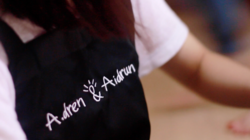
10. Please introduce the representative curriculum of “Art Education Service” which you developed.
Our representative art education curriculum "MY FIRST ART" consists of 30 classes. People, things, space, nature, time, emotions, and movement are held for 7 to 10 months. Each time, we show children various forms of art with as many different themes as possible. We also create many things in our curriculum to help children naturally unravel their stories rather than focusing on completing high quality works.
11. You made many products by collaborating with various brands while working at “a’dren.” When you are working on a collaborative project, do you usually get suggestions or requests from any brands?
I’ve met companies that collaborate on projects in a variety of ways. Corporations that take good care of us give us contacts or we write a plan and deliver it to the company. Sometimes, the person in charge of a company directly searches for a design brand or social enterprise to work with and then contacts us. More than that, it seems that whether the timing and needs of each side fit well determine whether the collaboration will proceed or not.
12. As “a’dren” continues to provide volunteer work in educational fields, you might have had a burden on costs. Nevertheless, why do you continue to volunteer, and what is the goal of this?
When I first started “a’dren”, I introduced “a’dren” as an art education volunteer team. As such, that is its clearest identity. Thankfully, there are many people who know “a’dren” as a design brand nowadays, the ultimate goal of “a’dren” is to help many children, share more stories, and deliver those stories to people. The stories are conveyed through what we call ‘design’. I believe that as long as “a’dren” does not stop volunteering and telling more people about children’s stories, there will be a definite change in people's thoughts, hopefully even over the whole world.
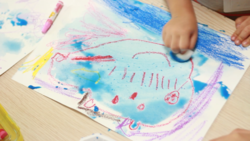
13. What was the theme and message that you put the most emphasis on while preparing for the “A-rist (children artist) exhibition” hosted by “a’dren”?
The following thoughts and wills penetrated not only the ‘2nd Artist Exhibition’ but also projects with similar contexts to this exhibition. I want the child writers who worked with us to be treated as real artists. There are two more things that were focused on. First, the audience participating in the attitude of appreciating the work rather than simply looking at the exhibition like a part of charity work, and secondly, the work itself being recognized as a work of art, just like design products.
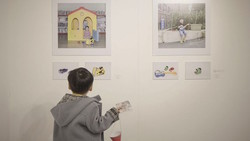
14. In the process of meeting children from various backgrounds through volunteering and listening to their stories, there might be difficulties. How do you deal with these?
When I see the instructors who work with us, they truthfully sympathize with the children's stories, make good eye contact, read their minds, and make a lot of effort to convey children’s thoughts honestly without any embellishment. In fact, it's impossible for anyone to fully understand each other, but all of us open our heart and try to truly just be with children. I think that the kids seem to recognize that effort without question.
15. Among the various products conceived from children’s ideas, which one do you feel most attached to?
Whenever I get this question, the product that always comes to my mind is the “cherry” pattern story. One child drew a tree with red fruits when drawing dreams, and said, "I want to become a cherry tree because I like cherries and their color." I can still remember how vivid the child’s eyes were and everyone was amazed and admired by this episode. Also, since it is the first story of the wallet series, and it's still a much-loved pattern from customers, so I'm even more attached to this design.
16. You have finished you’re “a’dren” activities and are currently working on your own creative work and are planning to make a picture book. What are your specific plans for this?
Due to personal circumstances, I worked as a co-representative of “a’dren” until last year. The co-founder friends who I trust are still running “a’dren” wonderfully. I have been taking a break for the past few months and have focused on raising my own children, and I am thinking of making a 'Prayer Picture Book' to read with them, so that is one plan. Now I am writing and imagining the size, feel, color and smell of the book. I aim to publish the book within this year.
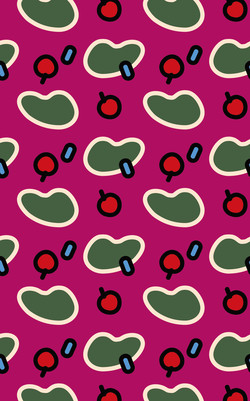
#Concluding the Interview
17. Do you have any thoughts of working in other fields besides the field you have experienced so far? If yes, what field are you interested in?
I did my MBA in management because I felt difficulties in management while running “a’dren” corporation. Besides that, I often felt a thirst for further study to gain depth in child welfare or society while working at “a’dren.” And though it’s a completely different field, I am thinking of doing more academic research in the field of child welfare or sociology.
18. What does CAU mean to you?
Honestly, I'd say it doesn't mean much to me. I've been doing jobs where the university title isn't very important, so I didn't have much to say about CAU with other people. However, if I hadn't gone to CAU, I could not have experienced many things. Also, the opportunity CAH gave me to tell my story like this is a valuable experience that I wouldn't have had if it wasn't for CAU.
19. Please give some advice and support to CAU students who are running hard towards their dreams.
I thought about what I would have wanted to hear back then, but in fact, it seems like it is a time when no one's words deeply touched my mind. Because, at that time, when I was a student, I was sure that I was going to make my own path. Maybe I think that the students nowadays are like that too. Whatever the path, I support and respect all CAU students.
Through this interview, CAH was able to learn about the values and goals of designer Choi Jae Eun, who has a deep affection for children's innocence and stories. Beyond her role as a designer, she pays attention to children's stories and creates a virtuous cycle across the fields of fashion, education, and art. CAH supports Choi Jae Eun, who will continue to leave various works and positively influence many people, including children.

